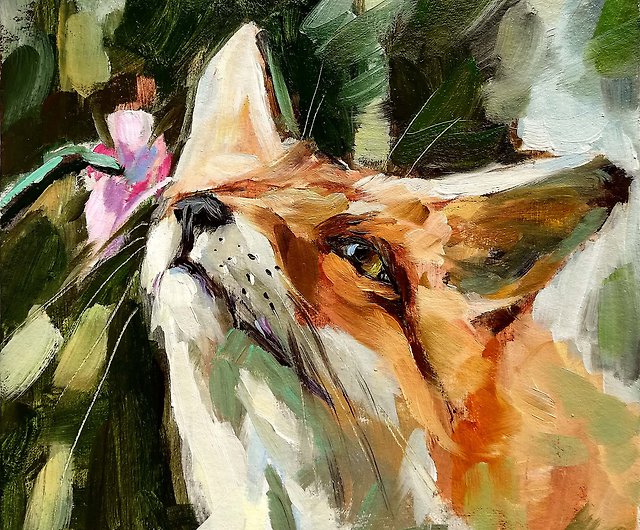Museum-Inspired Home Decor: Oil Paintings for Sale
Museum-Inspired Home Decor: Oil Paintings for Sale
Blog Article
The Benefits of Buying Oil Paints: Why They Are a Timeless Financial investment
The benefits of purchasing oil paints expand beyond simple aesthetic appeals. These art work bring historical value and social worth, making them beneficial additions to any type of collection. Their distinct structures and methods add to an appealing aesthetic experience. In addition, recognized artists often see their job value over time, offering a possible economic advantage - oil paintings for sale. As one explores the multifaceted reasons for spending in oil paintings, the deeper implications of such an option come to be significantly noticeable
The Aesthetic Charm of Oil Paints
The attraction of oil paintings hinges on their vibrant colors and abundant textures, which can transform any area into a remarkable environment. These art work have a deepness that astounds visitors, drawing them into the ins and outs of the brushstrokes and the interaction of light and shadow. The glossy coating of oil paint enhances the aesthetic experience, providing life to scenes and subjects in a means that various other tools often can not attain. In addition, the selection of designs-- from classical to modern-- enables a varied choice that can enhance any type of style. The psychological vibration shared via color selections and methods includes a layer of connection between the onlooker and the artwork, making oil paints not just attractive things, yet powerful expressions of imaginative vision.
Historical Significance and Social Worth
Oil paintings work as essential web links to an imaginative heritage, showcasing strategies and styles that have advanced over centuries. They encapsulate cultural expressions and identities, reflecting the values and stories of their time. By getting these works, individuals contribute to the conservation of history and the gratitude of varied social traditions.
Artistic Heritage Conservation
While several may ignore the importance of artistic heritage, purchasing oil paintings plays a vital function in maintaining historic and cultural narratives. These artworks act as aesthetic documentation of their time, recording the significance of societal values, customs, and historic occasions. By obtaining oil paintings, collection agencies add to the guarding of social legacies, guaranteeing that future generations can appreciate and discover from these imaginative expressions. Each piece shows the one-of-a-kind story of its developer and the context in which it was made. Furthermore, the continued appreciation and display screen of oil paints in different setups help to foster an understanding of varied artistic motions, enhancing the cultural landscape. Consequently, buying oil paints is not simply an economic decision but an act of social stewardship.
Social Expression and Identification
Art acts as a powerful tool for social expression and identification, reflecting the diverse narratives that form societies. Oil paints, in specific, catch the significance of cultural heritage, highlighting historical contexts and sociopolitical climates. Each brushstroke shares stories and feelings one-of-a-kind to specific customs, allowing viewers to engage with the musician's social history. This connection promotes a sense of recognizing and belonging among different communities. Additionally, oil paints frequently offer as aesthetic paperwork of cultural advancement, showcasing shifts in identity gradually. The financial investment in these art work not only sustains artists yet likewise maintains social legacies, making them substantial possessions for collectors. Eventually, oil paintings boost one's appreciation for the ins and outs of human experience and the abundant tapestry of social identity.
Recognition in Worth Over Time

The recognition of oil paints in time is influenced by numerous variables, consisting of historic worth patterns that show transforming tastes and cultural significance. In addition, the reputation of the artist plays an essential duty in figuring out the art work's market price, usually boosting as the musician gains recognition. Market demand variations can further impact costs, making oil paintings a possibly lucrative financial investment for enthusiasts.
Historic Value Trends
As collectors seek to invest in substantial properties, the historical worth patterns of oil paintings disclose an engaging narrative of gratitude in time. Historically, oil paints have demonstrated a regular upward trajectory in value, especially for jobs by established artists. Economic cycles and market demand have actually influenced these trends, with periods of boosted interest frequently resulting in significant rate surges. Auction records often highlight the remarkable returns achieved by renowned items, even more enhancing the idea of oil paintings as viable lasting investments. Additionally, social movements and shifts in collection agency preferences have actually occasionally spurred unforeseen recognition, revealing that the art market, while somewhat unforeseeable, typically favors top quality oil paints. Understanding these historical fads can assist financiers in making notified choices.
Musician Credibility Influence
While the credibility of an artist plays an important function in the gratitude of oil paintings, it is very important to acknowledge that this effect can differ significantly based upon several factors. Established artists, specifically those with a significant historical or cultural influence, often tend to see their works appreciate more swiftly. On the other hand, lesser-known or emerging musicians may not experience the exact same degree of demand, affecting their artwork's value. Furthermore, the musician's capacity to develop a consistent body of job and preserve relevance in the art world can affect lasting recognition. Collectors typically look for jobs from musicians that are identified by reliable galleries and organizations, which can even more improve the worth of an oil paint gradually, making artist reputation an essential factor to consider in investment decisions.

Market Need Fluctuations
How do market demand fluctuations influence the appreciation of oil paints in time? The worth of oil paintings is fundamentally connected to market need, which can differ based on financial conditions, trends, and enthusiasts' choices. In times of financial prosperity, need usually climbs, bring about increased rates as more buyers enter the marketplace. Alternatively, during financial declines, demand may dwindle, creating worths to stagnate and even decline. In addition, the popularity of specific artists can move, impacting their job's desirability. Inevitably, recognizing market demand is essential for financiers, as well-managed collections can value significantly with time, mirroring both the talent of the musician and the wider market characteristics. This interaction highlights the importance of tactical acquiring in oil paint financial investments.
One-of-a-kind Structures and Strategies
Oil paintings astound visitors with their distinctive textures and strategies, showcasing the artist's proficiency over the tool. The thick application of paint, called impasto, creates a three-dimensional result, welcoming touch and boosting visual depth. Musicians often use various brush strokes, layering, and glazing approaches to attain luminescent colors and complex information. This adaptability enables abundant contrasts and refined changes, making each art work uniquely meaningful. The slow-moving drying time of oil paint allows artists to blend shades perfectly, resulting in smooth gradients and lively shades. These techniques contribute to the paint's overall personality, making it an engaging centerpiece. Each oil painting works as a sign of the creativity and ability inherent in typical creative techniques.
Convenience in Home Style
The unique textures and strategies of oil paints oil paintings for sale not only display imaginative skill yet likewise improve their convenience in home style. These art work can seamlessly complement various indoor styles, from modern minimalist to conventional beauty. Oil paints serve as focal factors, drawing attention and triggering conversation among visitors. Their rich colors and deepness can balance with different shade palettes, making them adaptable to altering style patterns. In addition, the psychological resonance of oil paintings can produce atmosphere, whether it be warmth in a cozy living-room or vibrancy in an innovative office. By including oil paints, homeowners boost their rooms, transforming them into thoughtfully curated environments that mirror personal taste and creative gratitude. Inevitably, oil paints are a long-lasting choice for enhancing home visual appeals.
Link to Distinguished Musicians
While many art forms can stimulate affection, buying oil paintings commonly develops an one-of-a-kind link to prominent musicians throughout background. Possessing an oil paint allows enthusiasts to engage with the innovative visions of masters like Van Gogh, Monet, and Rembrandt. Each brushstroke personifies the artist's techniques, intentions, and feelings, offering understanding into their globe. This link transcends time, as each piece lugs a narrative that shows the historical and cultural context of its development. Collection agencies not only get a job of art however also a piece of the artist's legacy. As art lovers check out the stories behind these paints, they get a deeper appreciation for the craftsmanship and imaginative motions that shaped their growth, improving the worth of their financial investment.
Emotional and Emotional Benefits of Art
Art regularly serves as an effective catalyst for emotional and emotional wellness. The presence of oil paints in a home can evoke a series of emotions, from serenity to motivation. Their dynamic colors and intricate details provide visitors a getaway, allowing for representation and reflection. Research studies recommend that engaging with art can reduce stress and stress and anxiety, fostering a feeling of calmness. Additionally, owning original art work can create a personal connection, improving sensations of satisfaction and happiness. This emotional bond commonly causes a much deeper appreciation of one's surroundings, changing a residence into a home. Eventually, the emotional benefits of art extend past appearances, contributing to total psychological wellness and enriching life experiences.
Frequently Asked Inquiries
How Do I Choose the Right Oil Painting for My Area?
Picking the right oil painting involves considering the space's shade scheme, dimension, and overall aesthetic. One ought to review personal taste, the painting's emotional effect, and exactly how well it enhances existing decoration before deciding.

What Variables Influence the Value of an Oil Paint?
The value of an oil painting is influenced by elements such as the artist's credibility, provenance, historical relevance, rarity, market, and problem demand. Each element adds to total worth and value amongst collection agencies.
How Can I Take Care Of and Maintain My Oil Painting?
To care for and keep an oil paint, one need to consistently dirt it with a soft cloth, prevent straight sunlight direct exposure, control humidity degrees, and think about professional cleaning to maintain its vibrancy and honesty.
Are There Particular Musicians Recognized for Their Oil Paints?
Various artists are renowned for their oil paints - oil paintings for sale. Remarkable numbers consist of Vincent van Gogh, Claude Monet, and Rembrandt, each celebrated for their unique methods and payments to the art globe through dynamic, distinctive oil tools
Where Can I Purchase Authentic Oil Paints?
Authentic oil paintings can be acquired from credible galleries, art fairs, and online systems focusing on great art. Enthusiasts need to validate the authenticity and provenance before making a purchase to assure an important investment. Historically, oil paintings have actually demonstrated a constant upward trajectory in worth, particularly for jobs by well established artists. While the track record of an artist plays a necessary role in the recognition of oil paints, it is crucial to recognize that this impact can vary significantly based on numerous variables. Oil paints astound customers with their distinctive structures and techniques, showcasing the artist's mastery over the tool. While lots of art forms can evoke appreciation, purchasing oil paints typically establishes an one-of-a-kind link to renowned artists throughout background. The worth of an oil painting is affected by aspects such as the artist's track record, provenance, historical importance, condition, market, and rarity demand.
Report this page